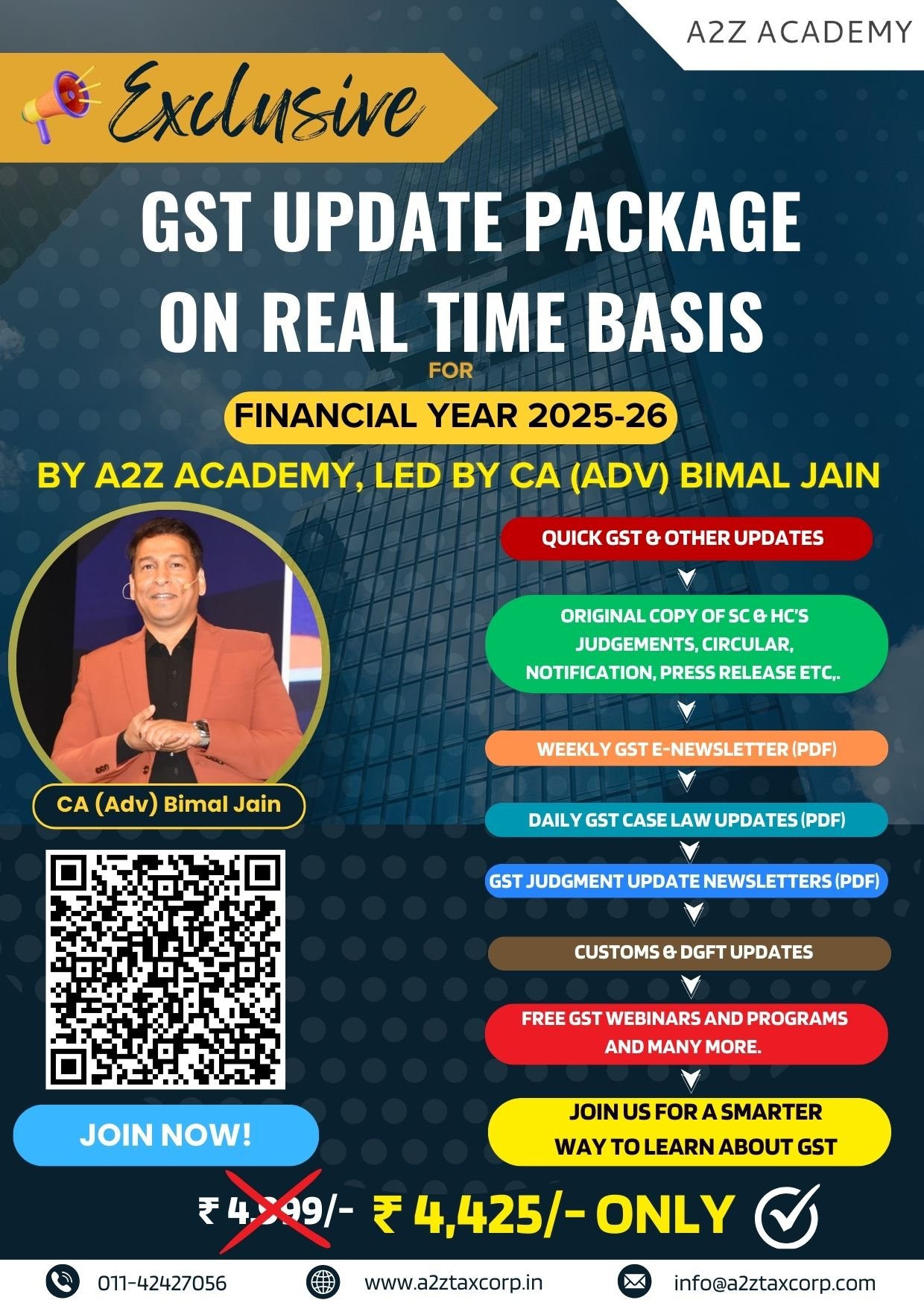
The CBDT, Data Analytics Cell issued Office Memorandum vide F. No. 434/07/2024-IT(DAC)/65 dated September 15, 2025 on Best Practices and Standard Operating Procedure for Assessing Capital Gains on Joint Development Agreements (JDAs) under Section 45(5A) of the Income Tax Act, 1961.
With the objective to standardize the approach for identifying and verifying cases to ensure compliance and revenue collection, this office memorandum outlines the provisions of Section 45(5A) of the Income Tax Act, 1961 and Standard Operating Procedure (SOP) based on the successful practices of the DGIT(Inv.)-Kolkata charge for the identification of potential cases of undisclosed capital gains u/s 45(5A) arising from Joint Development Agreements (JDAs).
Background and Statutory Provisions
Before the introduction of Section 45(5A), a landowner entering into a JDA would be liable to pay capital gains tax in the year the agreement was signed, even though they had not yet received their share of the developed property or monetary consideration. This created a genuine hardship, as taxpayers had a tax liability without the means to pay it.
To address this, the Finance Bill, 2017, introduced Section 45(5A), which provides a specific framework for individuals and Hindu Undivided Families (HUFs) who transfer land or buildings under a specified agreement. Under this provision, capital gains are now chargeable to tax as income of the previous year in which the certificate of completion for the whole or part of the project is issued by the competent authority. The full value of consideration is deemed to be the stamp duty value of the landowner’s share in the project on the date the completion certificate is issued, along with any monetary consideration received.
Letter issued by CBDT
The Investigation Division of CBDT, vide Letter F. No. 434/07/2024-IT(DAC) dated 21.10.2024, requested identification of the competent authority responsible for issuing occupancy-cum-completion certificates within each jurisdiction and collection of data for the last three financial years (FY 2021-22, 2022-23, and 2023-24). It is also requested obtaining details on the number of completion certificates issued during this period, reviewing the format in which such data is maintained by the competent authority, and assessing the feasibility of integrating this data with the Income Tax Department’s systems.
Pursuant to these instructions, the Kolkata charge conducted the required investigation and has submitted its report.
Best Practices Adopted by the Kolkata Charge
The DGIT(Inv.), Kolkata charge has developed a systematic and effective methodology to identify potential cases under Section 45(5A). The process leverages publicly available information from regulatory bodies and cross-references it with tax returns. The key steps are:
a) Utilizing RERA/HIRA Websites: The first step involves accessing the websites of the Real Estate Regulatory Authority (RERA) or the Housing Industry Regulation Act (HIRA) for their respective states or any other relevant sources of information. These websites contain a wealth of information, including lists of registered and approved projects.
b) Identifying Relevant Projects: The directorate identified approved projects under JDA where the landowners are individuals or HUFs. This is done by scrutinizing the project details and related documents (e.g., JDA/Development Agreements) available on the regulatory websites.
c) Cross-Referencing with Tax Returns: Once a potential case is identified, the next step is to download the copy of the tax return from the CPC 2.0 portal for the year in which the completion certificate was issued.
d) Verifying Capital Gains Disclosure: The Schedule-CG (Capital Gains) in the tax return is then checked to ensure the landowner has disclosed the required capital gains as per the provisions of Section 45(5A).
e) Issuing Summons: If the landowner has not disclosed the capital gains, a summon under Section 131(1A) of the Act is issued to seek their version and gather supporting documentary evidence.
The above method allowed the investigation directorate to proactively identify cases of non-compliance rather than relying on chance or third-party information. The successful model implemented in the Kolkata Charge can be adopted as a standard operating procedure on a pan-India level to effectively monitor and assess capital gains under Section 45(5A).
If the required information is not available on the respective RERA websites, the Directorate may approach the concerned RERA or development authorities to obtain JDA-related details and take further action as appropriate.
This best practice establishes a clear, systematic, and data-driven framework to ensure that eligible cases are assessed and tax revenue is secured efficiently and fairly nationwide, while following a non-intrusive and transparent manner.
The summary of the exercise is being shared for the benefit of all charges and to facilitate expeditious investigations in compliance with CBDT’s letter F. No. 434/07/2024-IT(DAC) dated 21.10.2024.
The report on the matter may be sent to CBDT latest by 31.10.2025.
This issues with the approval of the Chairman, CBDT.
The Office Memorandum can be accessed at: https://a2ztaxcorp.net/wp-content/uploads/2025/09/CBDT_OM_JDA_15.09.2025.pdf
